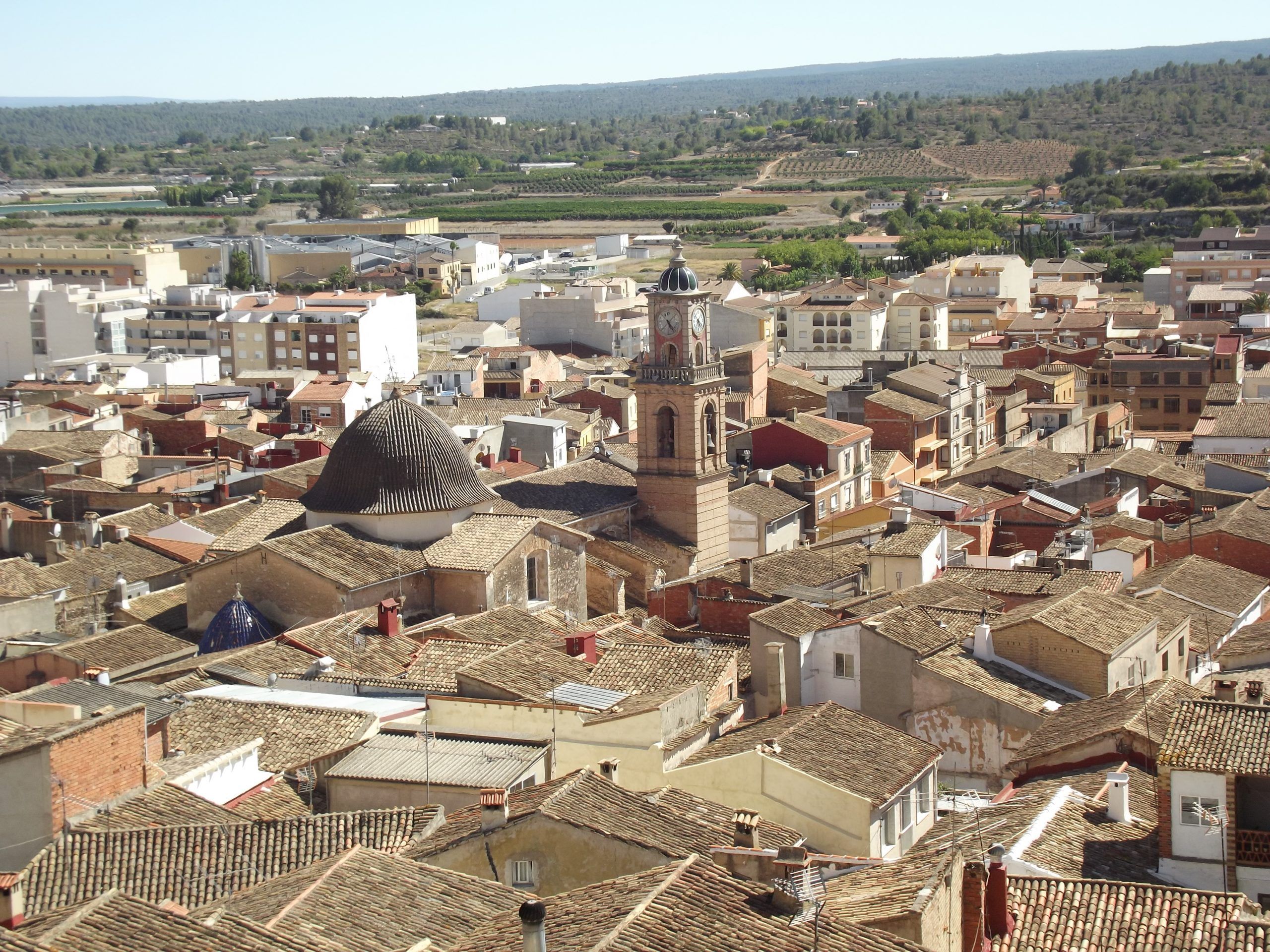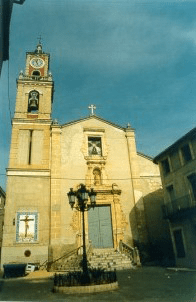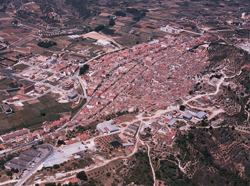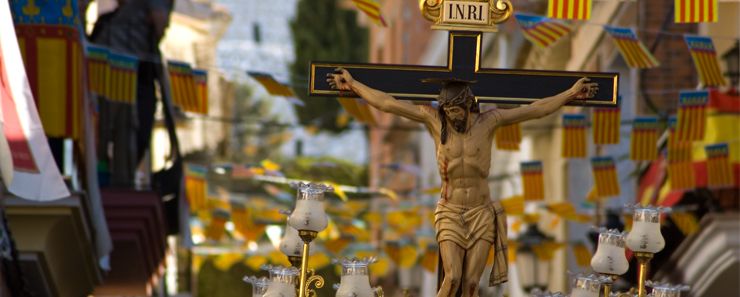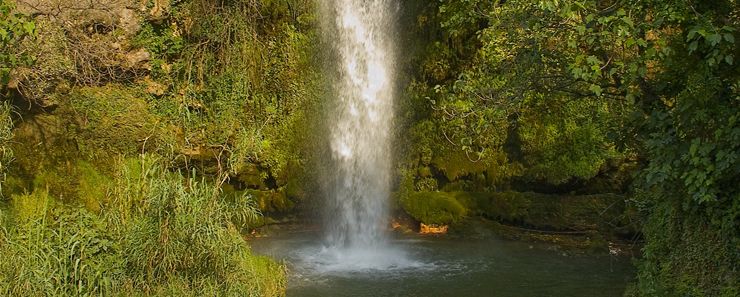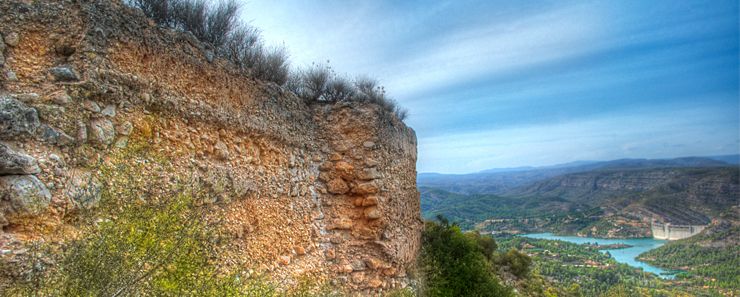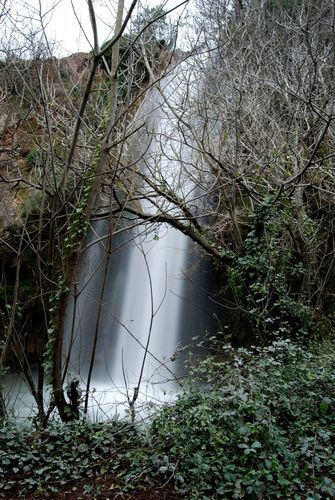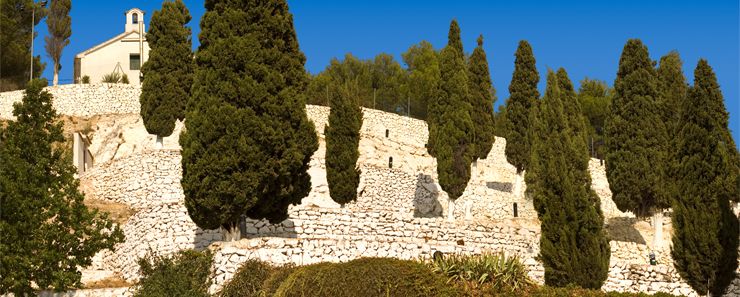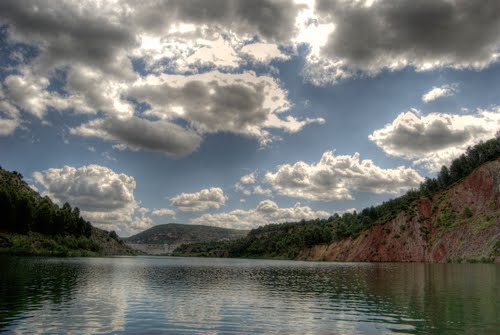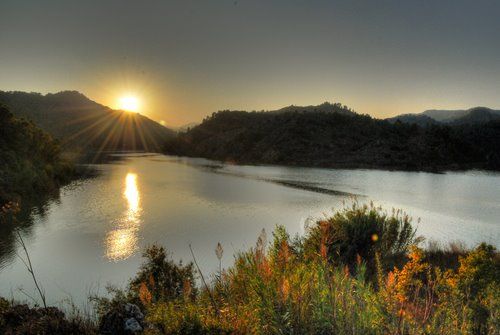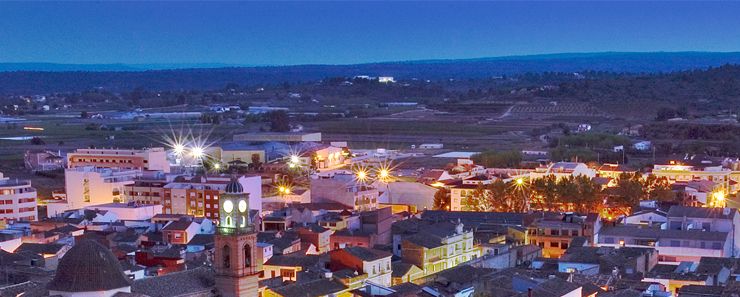Navarrés
Navarrés, a municipality located in the eastern part of El Caroig, gives its name to the Canal de Navarrés, which is composed of the villages of Anna, Bicorp, Bolbaite, Chella, Enguera, Millares, Navarrés and Quesa. Canal de Navarrés is one of the central administrative regions within the Valencia Region, with Enguera as its capital and Jativa as the nearest large commercial town. Its location places it at the point of access to the mountainous interior of the Valencia province.
The municipality covers an area of 47.4 km² and is rectangular in shape. The village itself is located at 298m above sea-level and has the following geographical coordinates: 39° 99’ 50’’ latitude north and 0° 30’ 75’’ longitude east. It borders with Quesa and Tous to the north, with Tous and Sumacàrcer to the east, Chella and Bolbaite to the south and Quesa to the west.
It sits on a small plain in a ravine at the base of a hill. The plain is crossed by the crystal waters of the Navarrés River. The old part of the village is filled with small, narrow streets, whilst the newer area has wider, straight roads, including Pintor Tarrasó Avenue. There is also a village named Playamonte within the municipality.
Gastronomy:
The local gastronomy combines the Mediterranean culture of rice dishes with certain contributions from the region’s inland cuisine. The wide variety of dishes available includes mojo arriero, gachamiga, gazpachos, baked rice, stews and, most notably, home-made, cured, dried sausages. Navarrés’ most traditional and typical sweet dishes include xitxorrites cake, tortafines, nougat and Swiss roll. Since the beginning of the 10th century, Navarrés has been producing excellent olive oil.
Places of interest:
Navarrés’ most notable monuments are:
- The parish church of Our Lady of the Assumption (reconstructed in 18th century, and the parish museum.
- The Hermitage of the Christ of Salvation.
- L’Abribador dels moros
- Castle (ruins)
- La Tinaja (Arabic granary)
- La Marquesa fountain, or the “fountain of the 24 spouts” (over 200 years old)
There are many interesting archaeological sites in the vicinity: L’Ereta del Pedregal, considered one of the most important Neolithic sites in Spain; Las Fuentes; l’abric del Garrofero (rock art) La Cueva del Barbero, which contains carvings; La Cueva del Panqués, a Neolithic burial site; Las Carasetas, composed of ten, mostly red and white figures measuring 60 and 70 cm, grouped in two rows and representing human faces with eyes, nose and mouth, and which are believed to date from the Bronze Age.
Navarrés’ natural heritage includes the natural parks Ceja del Río Grande, Fuente del Pino and La Carrasqueta, Las Quebradas Well, Escalona dam and the natural lake of Playamonte.
Navarrés also has a factory producing home-made pastries, such as those made from sweet potato, almonds, etc. Olive oil and honey are also produced locally. “Caliquenyos” (small, handmade cigars) of very high quality are produced in the village.
For further tourist information: NAVARRÉS.
Festivities:
Celebrations are held on 17th January in honour of Saint Anthony. A bonfire is prepared in Bario square on the eve of the celebrations, and on the following day blessed bread is distributed.
A Culture Week is held during the first week of September. The acts included in the celebrations include music concerts, dances, a popular marathon and a fun run. A wide range of sports activities are held in the municipal sports centre and pool.
The Navarrés Fair is held between 8th and 13th October in honour of the Christ of Salvation. Festivities for the village’s patron saint, Saint Gregory, are held on 12th March. The traditional “Paupers’ Lunch” is held in the village square, during which baked rice dishes are served.
L’Hora del Quijal is held on 1st November, during which small children call on the neighbours for peanuts, persimmons, oranges and other treats.
